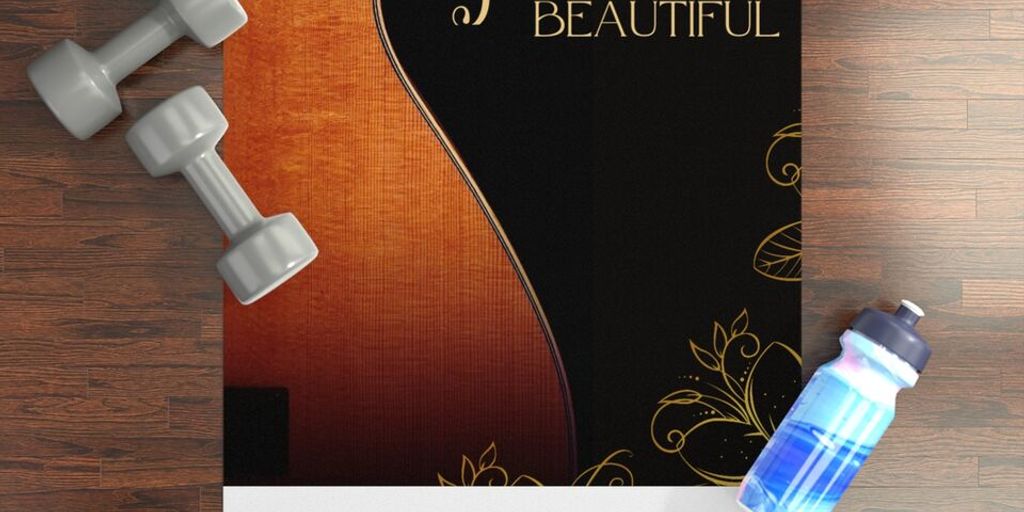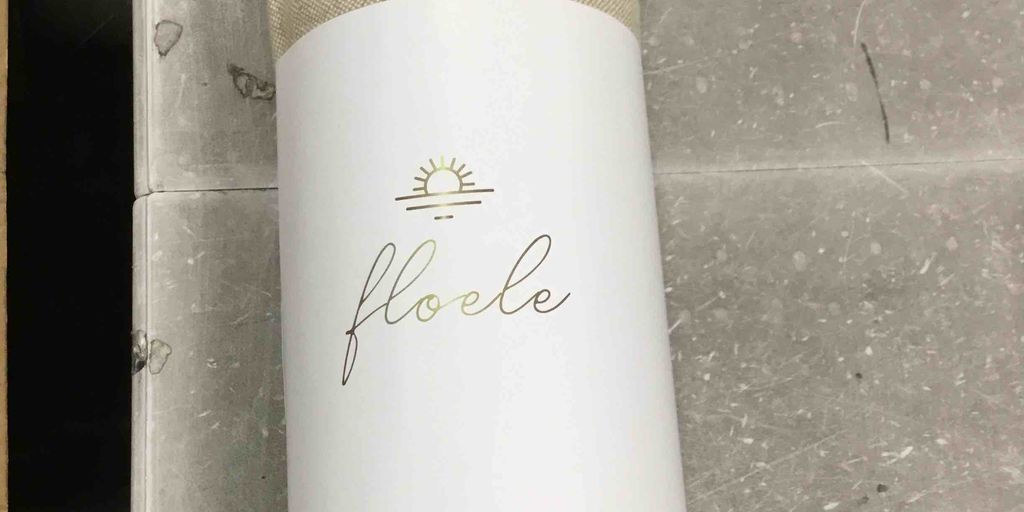
The Ultimate Guide to Choosing the Perfect Rubber Yoga Mat
Choosing the right yoga mat is crucial for a comfortable and effective practice. Rubber yoga mats are a popular choice due to their many benefits, such as being eco-friendly and providing excellent grip. This guide will help you understand the advantages of rubber mats, how to pick the right one, and how to take care of it. We'll also compare rubber mats with other materials and suggest some top brands and budget-friendly options.
Key Takeaways
- Rubber yoga mats are eco-friendly and offer great grip and stability.
- Consider your yoga style and comfort needs when choosing the thickness of your mat.
- There are different types of rubber used in yoga mats, including natural, synthetic, and recycled rubber.
- Proper care and storage can extend the life of your rubber yoga mat.
- You can find both high-end and budget-friendly rubber yoga mats from various brands.
Benefits of Using a Rubber Yoga Mat
Eco-Friendly and Sustainable
Rubber yoga mats are a great choice for those who care about the environment. Natural rubber is biodegradable, which means it breaks down over time and doesn't harm the planet. This makes it a better option compared to mats made from synthetic materials. Plus, many rubber mats are made from sustainable sources, so you can feel good about your purchase.
Durability and Longevity
One of the best things about rubber yoga mats is their durability. They can last for years, even with regular use. This means you won't have to replace your mat as often, saving you money in the long run. Rubber mats are also resistant to wear and tear, making them a smart investment for any yogi.
Enhanced Grip and Stability
When it comes to grip, rubber yoga mats are hard to beat. They provide excellent traction, which helps you stay stable during your practice. This is especially important for poses that require balance. With a rubber mat, you can focus on your practice without worrying about slipping. This makes them a top choice for many yogis.
When choosing the right yoga mat, consider the benefits of rubber mats for grip, durability, and sustainability. They offer a great balance of comfort and performance, making them ideal for all types of yoga.
How to Choose the Right Thickness for Your Rubber Yoga Mat
When it comes to finding the perfect yoga mat thickness for your practice, it’s important to consider a few key factors. Yoga mats typically come in a variety of thicknesses, ranging from thin (about 1/16 inch) to thick (up to 1/4 inch). Here’s a quick look at the common options:
| Thickness | Description |
|---|---|
| 1/16 inch | Very thin, great for balance |
| 1/8 inch | Standard thickness, good for most |
| 1/4 inch | Thick, offers extra cushioning |
Consider your yoga style when choosing the thickness. For instance, if you practice balance-focused styles like Hatha or Iyengar, a thinner mat may help you feel more grounded. On the other hand, if you enjoy more dynamic styles like Vinyasa or Ashtanga, a thicker mat can provide extra comfort and support.
Next, evaluate your comfort needs. If you have sensitive joints or plan to do a lot of floor work, a thicker mat can help reduce strain. However, if you need to carry your mat around often, a thinner mat might be more portable and easier to store.
Remember, the right thickness can enhance your practice and make it more enjoyable!
Understanding Different Types of Rubber Used in Yoga Mats
Natural Rubber
Natural rubber is derived from rubber trees and is known for its eco-friendly properties. It provides excellent grip and cushioning, making it a popular choice among yogis. However, it can be heavier and may have a distinct smell when new.
Synthetic Rubber
Synthetic rubber, often made from materials like PVC or EVA, is designed to mimic the properties of natural rubber. It is usually more affordable and can be lighter. However, it may not be as eco-friendly and might wear out faster.
Recycled Rubber
Recycled rubber mats are made from repurposed rubber materials, making them a sustainable option. They offer good durability and grip, though they might not be as soft as natural rubber mats. These mats are a great choice for those looking to reduce their environmental footprint.
Choosing the right type of rubber for your yoga mat depends on your personal preferences and values. Whether you prioritize eco-friendliness, cost, or durability, there's a rubber yoga mat out there for you.
Caring for Your Rubber Yoga Mat
Taking care of your rubber yoga mat is essential for keeping it in great shape and extending its life. Regular cleaning is key to maintaining its quality. To clean your mat effectively, mix warm water with a few drops of dish soap in a bowl. Use a soft cloth or sponge to gently wipe down the surface. Avoid using harsh chemicals, as they can damage the rubber.
Here are some tips for proper storage:
- Keep it dry: Always store your mat in a dry place to prevent mold and mildew.
- Roll it up: When not in use, roll your mat instead of folding it to avoid creases.
- Avoid direct sunlight: Keep your mat away from direct sunlight to prevent fading and cracking.
You should also know when to replace your mat. If you notice any signs of wear, such as cracks or a slippery surface, it might be time for a new one.
Remember, a well-cared-for mat not only lasts longer but also provides better support during your practice.
Here’s a quick summary of cleaning and maintenance tips:
| Task | Frequency |
|---|---|
| Clean with soap and water | Every 1-2 weeks |
| Inspect for damage | Monthly |
| Replace if worn out | As needed |
Comparing Rubber Yoga Mats to Other Materials
Rubber vs. PVC
Rubber yoga mats are known for their eco-friendly nature, as they are often made from natural materials. In contrast, PVC mats are made from plastic, which is not biodegradable. Rubber mats offer better grip and stability, making them a preferred choice for many yogis. However, PVC mats are usually cheaper and more widely available.
Rubber vs. TPE
When comparing rubber to TPE (Thermoplastic Elastomer), rubber mats generally provide superior durability and longevity. TPE mats are lighter and easier to carry, but they may not offer the same level of grip and stability as rubber mats. If you prioritize a mat that lasts longer and offers better performance, rubber is the way to go.
Rubber vs. Cork
Cork mats are another eco-friendly option, similar to rubber mats. Both materials provide excellent grip, but cork mats tend to be more expensive. Rubber mats are also more flexible and can be rolled up easily for storage. If you are looking for a balance between cost and performance, rubber mats are a great choice.
When choosing a yoga mat, consider the title: understanding different yoga mat materials. Each material has its own pros and cons, so think about what matters most to you, whether it's grip, durability, or eco-friendliness.
Top Brands for Rubber Yoga Mats
Liforme
Liforme is known for its high-quality rubber yoga mats that offer excellent grip and stability. These mats are designed with alignment markers to help you maintain proper form during your practice. Liforme mats are eco-friendly and biodegradable, making them a great choice for environmentally conscious yogis.
Manduka
Manduka offers a range of rubber yoga mats that are both durable and comfortable. Their PRO series is particularly popular among advanced practitioners due to its dense cushioning and long-lasting material. Manduka mats are also free from harmful chemicals, ensuring a safe practice environment.
Jade Yoga
Jade Yoga mats are made from natural rubber tapped from rubber trees, making them a sustainable option. These mats provide excellent traction and cushioning, which is ideal for various yoga styles. Jade Yoga also plants a tree for every mat sold, contributing to environmental conservation efforts.
Choosing a rubber yoga mat from a reputable brand ensures you get a product that is both high-quality and eco-friendly. Whether you prioritize grip, durability, or sustainability, there's a perfect mat out there for you.
Budget-Friendly Rubber Yoga Mats
When looking for a rubber yoga mat that won't break the bank, there are plenty of affordable options available. These mats offer great value without compromising on quality.
Affordable Options
You don't have to spend a lot to get a good rubber yoga mat. Many brands offer budget-friendly choices that still provide excellent grip and durability. Look for mats that are made from natural rubber or recycled materials, as these can be both cost-effective and eco-friendly.
Where to Buy
Finding a budget-friendly rubber yoga mat is easier than you might think. You can check out online retailers, local sports stores, or even discount outlets. Websites like Amazon, Walmart, and Target often have a wide selection of mats at various price points.
What to Look For in a Budget Mat
When shopping for a budget mat, consider the following:
- Material: Ensure it's made from high-quality rubber.
- Thickness: Choose a thickness that suits your comfort needs.
- Grip: Make sure the mat offers good traction.
- Durability: Look for reviews that mention the mat's longevity.
A good budget-friendly rubber yoga mat can make your practice enjoyable without costing a fortune.
Looking for a yoga mat that won't break the bank? Check out our budget-friendly rubber yoga mats! They're perfect for anyone who wants quality without spending too much. Visit our website to explore our collection and find the perfect mat for your practice.
Conclusion
Choosing the perfect rubber yoga mat doesn't have to be hard. By thinking about things like thickness, texture, and eco-friendliness, you can find a mat that fits your needs. Remember to also consider your budget and personal style. With the right mat, your yoga practice can become more enjoyable and effective. Take your time, do your research, and soon you'll be on your way to a better yoga experience.
Frequently Asked Questions
What makes rubber yoga mats eco-friendly?
Rubber yoga mats are eco-friendly because they are often made from natural or recycled rubber, which is biodegradable and doesn't harm the environment.
How thick should my rubber yoga mat be?
The thickness of your yoga mat depends on your yoga style and comfort needs. Thicker mats provide more cushioning, which is great for gentle yoga, while thinner mats offer better stability for active yoga styles.
How do I clean my rubber yoga mat?
To clean your rubber yoga mat, wipe it down with a damp cloth and mild soap. Avoid using harsh chemicals as they can damage the rubber. Let it air dry completely before rolling it up.
Can I use my rubber yoga mat outdoors?
Yes, you can use your rubber yoga mat outdoors. However, be mindful of rough surfaces that can cause wear and tear. Always clean your mat after outdoor use to keep it in good condition.
How long do rubber yoga mats last?
The lifespan of a rubber yoga mat depends on how often you use it and how well you take care of it. With proper care, a good-quality rubber mat can last several years.
Are rubber yoga mats better than PVC mats?
Rubber yoga mats are generally considered better than PVC mats because they are more eco-friendly, provide better grip, and are usually more durable.


